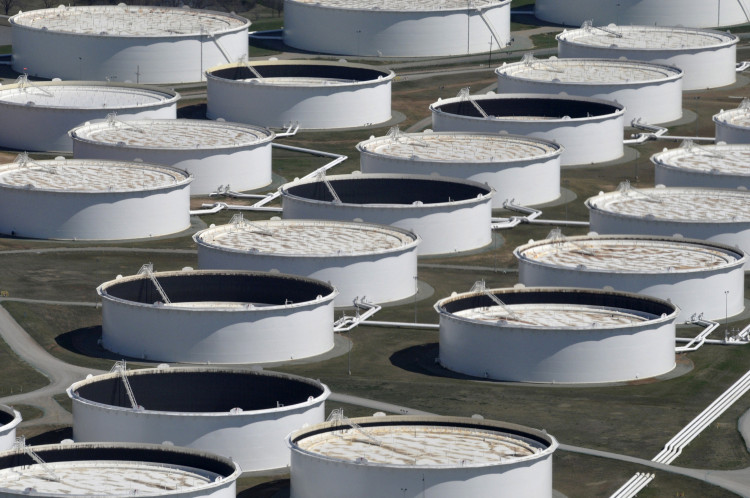The recent surge in oil prices came to a halt on Tuesday as traders and investors paused to assess the likelihood of an escalation in the Middle East following Iran's missile attacks on Israel. Market participants are closely watching for Israel's next move, with many speculating that the country may retaliate against Iran's oil infrastructure, which could further disrupt global oil supplies.
After hitting its highest levels since late August on Monday, Brent crude futures dropped $1.60, or 2%, to settle at $79.33 per barrel. U.S. West Texas Intermediate (WTI) also declined by $1.60, or 2.07%, to $75.54 a barrel. The pullback came after both benchmarks had surged over 3% on Monday, with Brent briefly surpassing the $80 per barrel mark.
Gaurav Sharma, an independent oil analyst based in London, noted that the rise in Brent crude above $80 per barrel faces significant resistance due to ongoing demand uncertainties and potential oversupply issues. "While short-term upside pressure will likely be maintained until there is clarity on what Israel will do next, the decline in Brent has shown that breaking above $80-82 per barrel will be challenging without a concrete disruption in supply," Sharma said.
The rally in oil prices was initially driven by heightened geopolitical tensions following Iran's missile barrage on Israel on October 1. The prospect of an Israeli retaliation targeting Iran's oil facilities raised concerns of a broader conflict that could jeopardize oil supplies from the Middle East. However, despite the tense situation, market analysts believe that a direct attack on Iranian oil infrastructure remains unlikely in the immediate future.
"Oil can keep ascending only for so long purely based on perceptions and not actual supply disruption," said Tamas Varga, an analyst at oil brokerage PVM. "While it would be irresponsible to claim that the dust has settled on Iran's direct involvement in the conflict, the threats of Israeli assaults on Iranian oil facilities have not materialized yet."
Beyond Middle East tensions, economic developments in China also weighed on oil prices. China, the world's largest crude importer, announced that it remains "fully confident" of achieving its economic growth targets for the year but stopped short of implementing stronger fiscal measures to stimulate its economy. Giovanni Staunovo, an analyst at UBS, stated, "Oil prices are suffering from a risk-off environment, likely driven by some disappointment on the latest Chinese stimulus measure announcement."
Concerns about slow growth in China have raised fears of a potential slowdown in global oil demand, adding another layer of uncertainty to the market. In the U.S., the intensification of Hurricane Milton into a Category 5 storm has also caused disruptions, forcing at least one oil and gas platform in the Gulf of Mexico to shut down on Monday.
Traders are now looking ahead to the release of U.S. crude oil inventory data, with analysts expecting an increase in stockpiles by 1.9 million barrels for the week ending October 4, according to a preliminary Reuters poll. The American Petroleum Institute (API) is set to release its data on U.S. stockpiles, followed by the official numbers from the Energy Information Administration (EIA).
The pause in the oil rally comes after a remarkable surge in prices fueled by concerns over supply disruptions in the Middle East. Since Iran's missile attack last week, oil prices have risen sharply, with Brent crude up about 13% through Monday's close. This sharp rise was the biggest weekly gain in over a year, driven by fears that escalating hostilities could lead to a broader regional conflict affecting major oil producers.
Market analysts caution that without a direct disruption in oil supply or further escalation in the conflict, the current levels of oil prices may be unsustainable. "The market has been pricing in a lot of risk premium based on geopolitical developments, but without concrete supply disruptions, we could see some downward correction in oil prices," Varga added.
Investors are also keeping a close eye on broader economic indicators, with rising oil prices already impacting global markets. The Dow Jones Industrial Average and S&P 500 both slid on Monday, partly weighed down by higher oil prices and rising Treasury yields. The benchmark 10-year Treasury yield climbed to 4.02%, its highest level since August, further influencing market sentiment.






